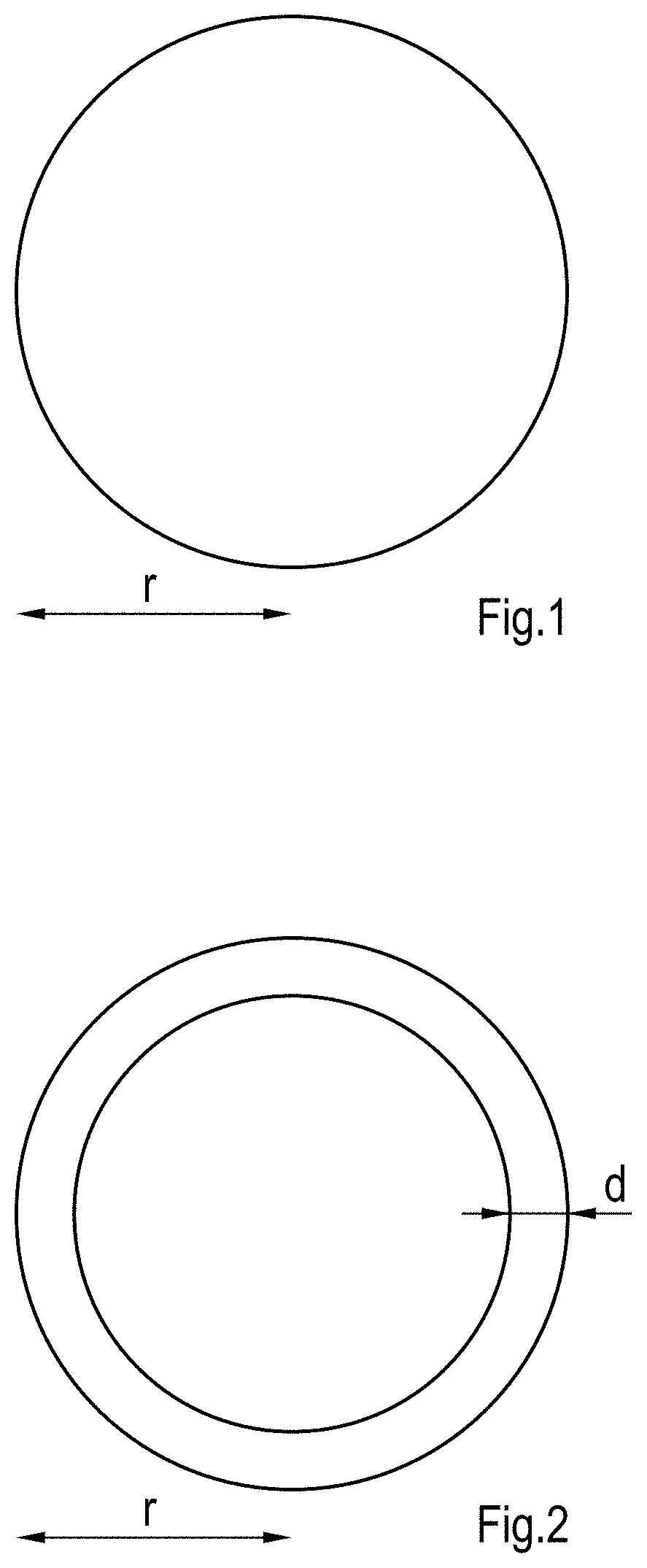Co to co2 combustion promoter
a technology of co2 and promoter, which is applied in the direction of metal/metal-oxide/metal-hydroxide catalyst, physical/chemical process catalyst, separation process, etc., can solve the problem of high residual concentration of carbon monoxide in flue gases from regenerators, significant damage to plant equipment, and large amounts of noble metals, etc. problems, to achieve the effect of less nox formation, less diffusion limitation, and higher loading
- Summary
- Abstract
- Description
- Claims
- Application Information
AI Technical Summary
Benefits of technology
Problems solved by technology
Method used
Image
Examples
example 1
[0061]A two-step impregnation was carried out using a high purity gamma alumina support as purchased from Sasol. In the first step, 10 g of alumina powder was impregnated with water to fill 90% of the pore volume. At a pore volume of 0.5 mL / g, 4.5 mL of water was required for 10 g of alumina powder. For the second step, the wet alumina particles from step 1 with 90% of the pore volume filled with water were impregnated with a solution of palladium nitrate and dried to achieve an eggshell of palladium on the particle surface. The second impregnation step was completed before the pre-filled alumina particles were dried. After completing both impregnation steps, the impregnated particles were calcined at 600° C. for 1 hour to form a particle with the composition in accordance with this invention.
example 2
[0062]0.1 g of the composition of Example 1 was mixed with 10 g of a commercial FCC catalyst. The mixture was then used to measure the oxidation of CO in a fluid bed reactor fitted with a thermocouple. The catalyst bed was heated to 600° C. prior to the start of CO / O2 flow. Oxidation response was measured using a mixture of 1.8 v / v % CO and 0.9 v / v % 02, balanced with He, under a gas flow rate of 1000 cc / min. The oxidation response is a measure of the amount of CO which is combusted (oxidized) to CO2.
example 3
[0065]A two-step impregnation was carried out using a high purity gamma alumina support as purchased from Sasol. In the first step, 10 g of alumina powder was impregnated with water to fill 90% of the pore volume. At a pore volume of 0.5 mL / g, 4.5 mL of water was required for 10 g of alumina powder. For the second step, the wet alumina particles from step 1 with 90% of the pore volume filled with water were impregnated with a solution of platinum nitrate and dried to achieve an eggshell of platinum on the particle surface. The second impregnation step was completed before the pre-filled alumina particles were dried. After completing both impregnation steps, the impregnated particles were calcined at 600° C.
PUM
| Property | Measurement | Unit |
|---|---|---|
| size | aaaaa | aaaaa |
| size | aaaaa | aaaaa |
| particle size | aaaaa | aaaaa |
Abstract
Description
Claims
Application Information
 Login to View More
Login to View More - R&D
- Intellectual Property
- Life Sciences
- Materials
- Tech Scout
- Unparalleled Data Quality
- Higher Quality Content
- 60% Fewer Hallucinations
Browse by: Latest US Patents, China's latest patents, Technical Efficacy Thesaurus, Application Domain, Technology Topic, Popular Technical Reports.
© 2025 PatSnap. All rights reserved.Legal|Privacy policy|Modern Slavery Act Transparency Statement|Sitemap|About US| Contact US: help@patsnap.com



